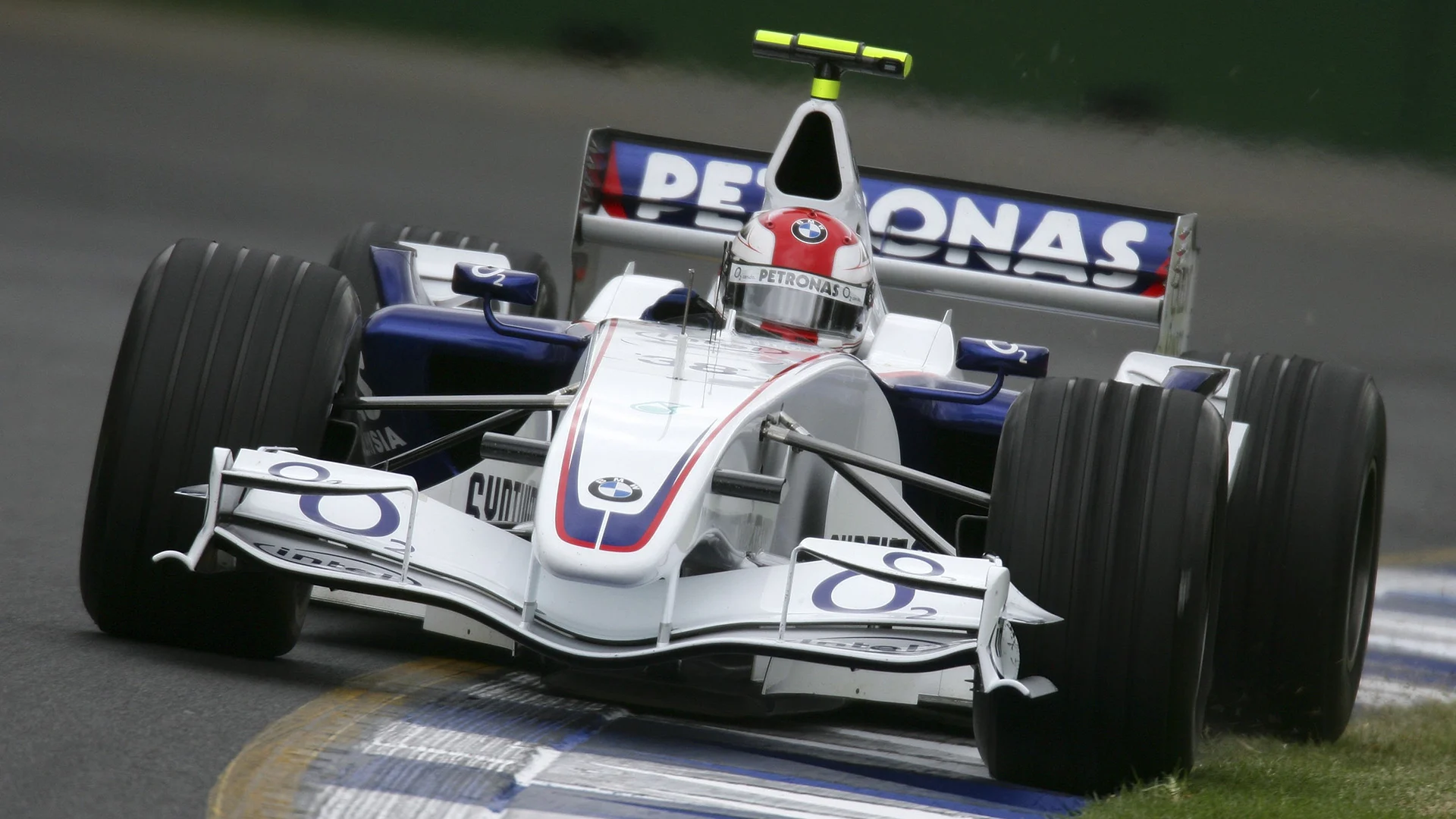In the competitive world of Formula 1, where tenths of a second separate triumph from tragedy, stories of immense talent and unfulfilled potential are not uncommon. Yet, few resonate as profoundly as that of Robert Kubica, a driver Fernando Alonso once called a “legend” and who many believe was a world champion in the making. His career is a poignant tale of what could have been, a narrative defined by blistering pace, a fiery determination, and a life-altering accident that irrevocably changed his destiny.

Born in Krakow, Poland, Kubica’s journey to the pinnacle of motorsport was marked by a relentless pursuit of excellence. Like many of his contemporaries, he honed his craft in the cutthroat world of karting, where he regularly competed against future F1 champions like Lewis Hamilton and Nico Rosberg. It was here that Kubica first forged his reputation as a formidable competitor, a driver with an innate feel for the car and an unyielding will to win. His success in junior single-seater categories further solidified his status as one of motorsport’s brightest prospects, and it wasn’t long before the Formula 1 paddock took notice.
In 2006, Kubica’s dream of racing in F1 became a reality when he joined BMW Sauber. Initially signed as a test driver, his “pulverizing pace” during practice sessions made it impossible for the team to ignore his talent. He was quickly promoted to a race seat, and in only his third Grand Prix, he stood on the podium, a clear statement of intent from the young Pole. The F1 world was on notice: a new star had arrived.
The 2008 season was, by all accounts, Kubica’s masterpiece. Driving a BMW Sauber that was, at best, the third-fastest car on the grid, he consistently outperformed his machinery, delivering a series of masterful, error-free performances that saw him lead the world championship after a memorable victory in Canada. Many experts and pundits rated him as the best driver of the season, a testament to his exceptional skill and his ability to extract the maximum from his car, week in and week out. It was during this period that his reputation soared, and a pre-contract with the legendary Scuderia Ferrari was a clear indication of his standing in the sport. A future in the iconic red overalls of Ferrari seemed not just possible, but inevitable.

However, Kubica’s relationship with BMW Sauber was not without its frustrations. He felt that the team’s corporate-driven approach, which prioritized a rigid development schedule and improving his teammate’s performance over capitalizing on his championship challenge, ultimately cost him a shot at the 2008 title. It was a bitter pill to swallow for a driver who knew he had the talent to go all the way.
When BMW announced their withdrawal from F1 at the end of 2009, Kubica found a new home at Renault for the 2010 season. Here, his demanding nature and his deep technical understanding of the car proved to be a catalyst for the team’s resurgence. He transformed a “good but not great car” into a regular podium contender, delivering an “outstanding season” that included a memorable third-place finish in the prestigious Monaco Grand Prix. Once again, Kubica had proven his ability to elevate a team and inspire those around him. The future looked bright, and a move to a top team seemed just around the corner.
But then, on February 6, 2011, disaster struck. While competing in a rally in Italy, an event he participated in for sheer love of driving, Kubica was involved in a horrific crash. A guardrail penetrated the cockpit of his car, causing devastating injuries to his right arm and leg. The accident not only ended his 2011 F1 season before it had even begun, but it also cast a long and ominous shadow over his entire career. The road to recovery would be long and arduous, and a return to the physically demanding world of Formula 1 seemed, for all intents and purposes, impossible.
Yet, those who underestimated Robert Kubica’s resolve did so at their peril. His comeback was nothing short of remarkable, a testament to his indomitable spirit and his unwavering love for motorsport. He first returned to competition in the world of rallying, winning the WRC2 title in 2013 in a display of sheer grit and determination. But the lure of Formula 1 remained, and in 2017, he made a sensational return to the cockpit of an F1 car, testing for his former team, Renault. The following year, he secured a reserve driver role with Williams, a move that culminated in a full-time race seat for the 2019 season.

His return to the F1 grid was a moment of triumph, a victory against all odds. However, it was also a stark reminder of the physical limitations he now faced. Kubica himself admitted to driving “around 70% left-handed,” a staggering admission in a sport that demands precision and physical perfection. The 2019 season proved to be a difficult one, with an uncompetitive Williams car leaving him and his rookie teammate, George Russell, languishing at the back of the grid. While he was largely outperformed by the young Brit, the fact that Kubica was even competing at the highest level of motorsport was, in itself, a monumental achievement.
Though his full-time F1 comeback was short-lived, Kubica’s story did not end there. He has since gone on to achieve further success in endurance racing, winning two European Le Mans Series championships and conquering the legendary Le Mans 24 Hours. These victories are a testament to his enduring skill and his remarkable ability to adapt and overcome, even in the face of career-altering injuries.
Robert Kubica’s legacy in Formula 1 is a complex one. He is the “great what if story of the 21st century,” a driver whose immense talent and boundless potential were cruelly curtailed by a tragic twist of fate. Was he a future world champion? The evidence suggests that he was. His raw speed, his technical acumen, and his unyielding determination were the hallmarks of a true champion. While we will never know for certain what he could have achieved, one thing is beyond doubt: Robert Kubica was, and remains, one of the most gifted drivers of his generation, a true warrior whose incredible journey continues to inspire and captivate motorsport fans around the world.
News
Die Welt hat sich weitergedreht: Marie Fredriksson rechnet leise ab – 5 Stars, die sie im Stich ließen.
Der Klang von Roxette war der Soundtrack einer ganzen Generation. Mit Hits wie „It Must Have Been Love“ und „The…
Conny Froboess: Die bittere Wahrheit hinter der Traumkarriere – Im Alter trägt sie eine unheilbare Wunde.
Der Name Conny Froboess ist in Deutschland untrennbar mit einem Gefühl von Leichtigkeit und sonnigen Kindertagen verbunden. Wenn ihr größter…
DER WACKELDACKEL DER REPUBLIK: WIE MERZ’ „HERBST DER REFORMEN“ IN EINER EISZEIT DER STARRE ENDETE UND UNSERE ZUKUNFT VERPFÄNDET WIRD
Einbruch in die politische Wirklichkeit: Die bittere Bilanz nach dem Versprechen des Aufbruchs Mit großen Versprechungen begann die Zeit, die…
Bommes’ Nerven liegen blank: Unerwarteter Eklat in der letzten Folge von „Gefragt – Gejagt“ schockt die Fans
Ein Augenblick, der das harmonische Ende einer Quiz-Saison sprengte. Ausgerechnet in der vorerst letzten Ausgabe der erfolgreichen ARD-Show „Gefragt –…
Herzschlag-Finale in der Scheune: Friedrich und Laura trotzen dem TV-Kitsch mit dem ehrlichsten Liebesbeweis der Staffel
Der leise Moment, der lauter spricht als jede große Inszenierung Es war der Moment, auf den Millionen von Zuschauern der…
Kai Pflaume bricht sein Schweigen: Das 30-Jahre-Geheimnis hinter Deutschlands Vorzeige-Ehe und warum seine Ilke sein wichtigstes Korrektiv ist
Die deutsche Fernsehlandschaft hat viele Gesichter, aber nur wenige sind so konstant, so sympathisch und so untrennbar mit dem Gefühl…
End of content
No more pages to load












